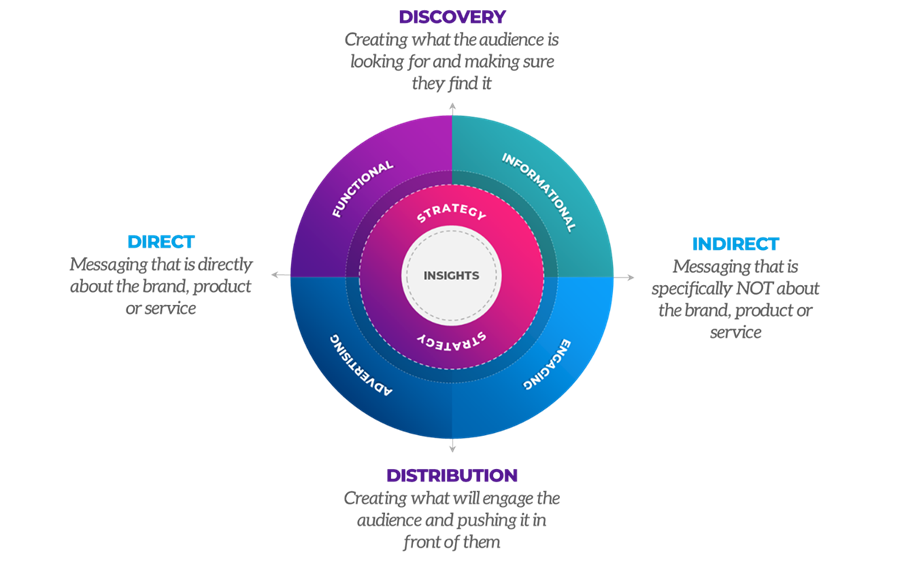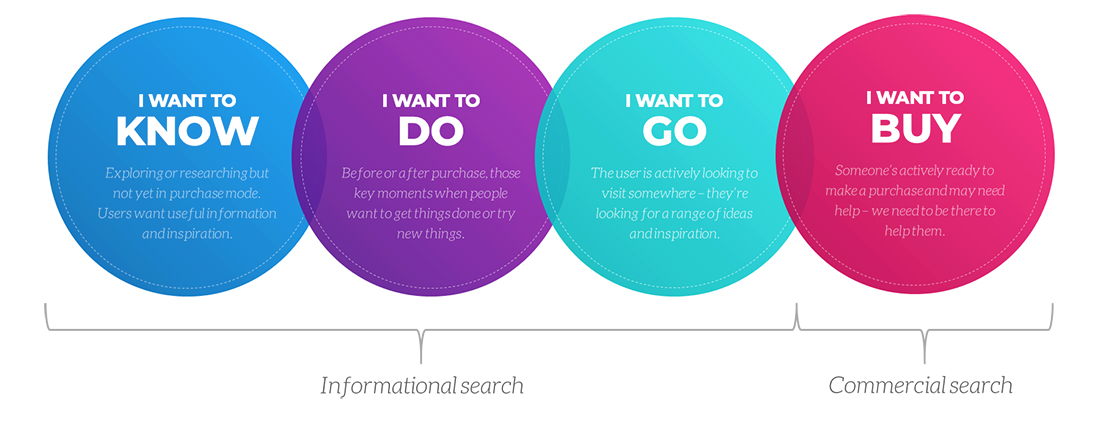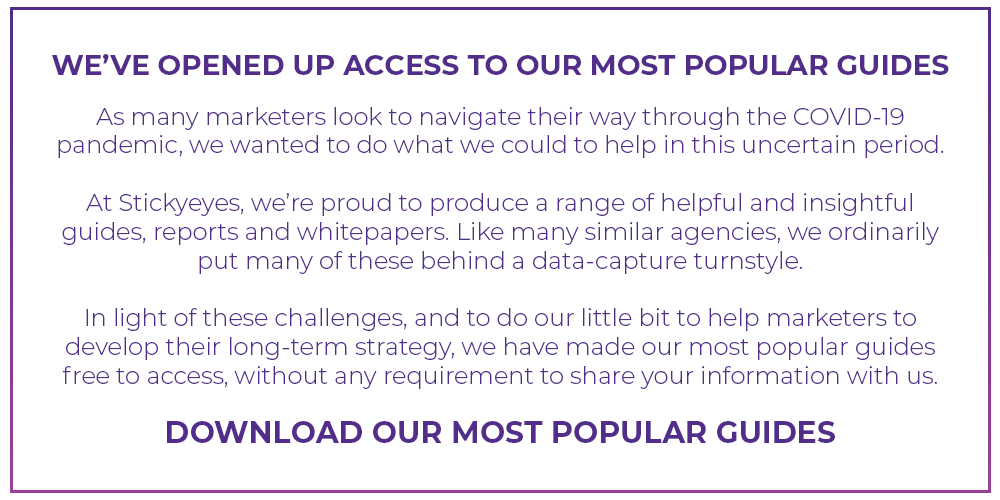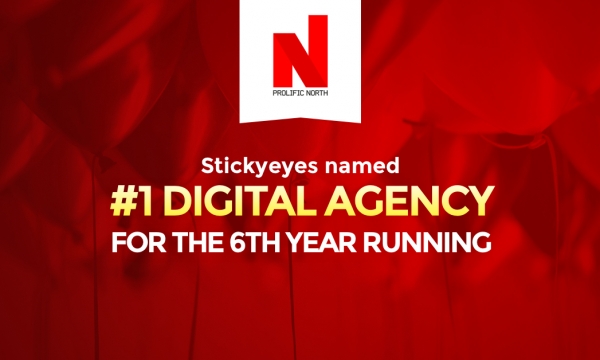There’s no digital playbook for something like covid-19. Not since the birth of the internet has something shaken the world so much and so quickly.
As a result, brands have had to react quickly and instinctively to do what’s right for their customers, communities and audiences. And many, thankfully, have risen to the task admirably.
But while the world has undoubtedly changed, the basics of the human condition have not. What people talk about still speaks volumes about what matters to them, which is why forward-thinking brands are rightly using social media listening extensively to plan their marketing communications for unprecedented times.
However, what people talk about in public is only one side of the coin. What they search for is something altogether different – more private, more honest, more revealing.
Every single search – on Google, on Amazon, wherever – represents a real person raising their hand and asking for help. Help to understand something, help to do something, help to obtain something. And in times like these, help is something people need more than ever.
It’s that which represents a golden opportunity for brands. Not a buccaneering opportunity to rinse more money out of people when they’re at their most vulnerable, but an opportunity to demonstrate the value they can provide – now and always.
By identifying the search moments in which your brand has a genuine, bona-fide right to ‘be there’ and add value for your customers, you can reach, engage and help people when they need you most.
To do that, you need to create two very specific types of content:
- Functional Content: Content that’s primarily there to be discovered via search, which is directly about your brand, products or services. This might be commercial pages, about us content or FAQ style content.
- Informational Content: Content that’s primarily there to be discovered via search, which is NOT directly about your brand, products or services. This might be evergreen or blog content which touches your audience’s passion points or pain points.
These are both types of discovery content – content which exists first and foremost to be found when people are looking for it – which occupy the top half of our Complete Content framework.

And critically, if you want that content to actually be discovered when people are searching for it, you need to create it in very specific ways to make sure it will work.
What do people want and need from you?
The first opportunity is to identify in great detail what people are searching around your brand – all of the key questions your audience want answered, via search, about your brand:
eg "[your brand name] + [Google search term]".
Tools such as Google Analytics and ahrefs can help you identify these questions, but forward-thinking brands can also use customer contact centre data and even qualitative customer research to identify emerging FAQ topics which haven’t yet filtered through to the search data. Exploring search trends in other markets further ahead in the coronavirus experience journey can also inform this research.
For financial services brands, what specific questions are customers asking about the impact of covd-19 on their accounts? What are the implications for their savings and investments? Will their insurance policies cover them?
By understanding these questions in great detail, and then creating high-quality, SEO and PPC optimised content on a search optimised site, you can ensure you’re giving your customers the information they want and need in the moments that matter.
The type of content needed for these brand-related moments is what we refer to as Functional Content – content which is primarily there to be discovered via search and which is explicitly about your brand, products or services.
Generally speaking, it’s usually relatively easy for brands to rank organically for their own brand-related terms, so the focus of this content should be simply about identifying what people want and need, and then creating best-in-class practical and actionable content which meets those needs.
We would typically achieve that by bringing SEO, UX, design and content experts together to work through clusters of search terms and agreeing a content solution which balances the needs of these different disciplines.
Where can you add value outside of the things you sell?
The second opportunity is to identify what relevant non-brand search micro-moments your brand has a right to rank for – across the whole user journey.
Going back to our financial services brand example, that might mean explaining the impact of coronavirus on the economy in general, or simply explaining what areas of finance to think about in the developing crisis. Anything that isn’t directly about the brand and it’s products, but which the brand has a ‘right’ to talk about – where the brand can add value through its expertise, authority and trustworthiness.

Since Google’s E.A.T. algorithm update in 2018, it’s more essential than ever for brands not to stray too far from their core areas of expertise. The challenge is identifying which search terms fit that bill, using the following process:
- Brainstorm non-brand topic areas with very high levels of brand relevance – things your audience is searching for, and which your brand has an indisputable right to be regarded as an expert, an authority and a trustworthy source.
- Carry out detailed keyword research in these areas.
- Group all relevant search terms into semantic clusters – groups of terms with very similar meaning.
- Develop content titles to cover these clusters – some titles may cover multiple clusters, other clusters may require individual article titles
- Analyse both opportunity size and competitiveness on an article title level to identify the biggest, quickest and most winnable battles from an organic search POV. We use a range of proprietary tools (SCOT / KIT) to do this quickly at scale.
Armed with a detailed list of article titles, prioritised by opportunity and competitiveness, you can now start creating Informational Content, which is designed to be discovered via search and which is explicitly not about your brand, product or service.
One example in the financial services sector might be ‘how will coronavirus effect my pension’?
To create best-in-class Informational Content, you’re likely to be going toe-to-toe against the most powerful and trusted sites on the internet, so your content needs to be deep, rich and incredibly high-quality. And you need to make sure your content meets the needs of both users and search algorithms.
- Pick the right battles:
Ensure you’re choosing topics your target audience are actually searching for and only cover content topics which are genuinely within your field of expertise as a brand. - Understand users’ intent:
Ensure your Informational Content is focused on meeting users’ wants and needs. The main content on informational pages should be 100% focused on answering the user’s query – but supplementary and advertising content can be used on these pages to highlight relevant products and services. - Demonstrate your EAT creds:
Your expertise, authority and trustworthiness must be absolutely clear and obvious on informational content pages. Use named, expert, qualified authors or expert interviewees, source and reference all factual claims. Include proof points and evidence throughout. - Be best-in-class:
Ensure your informational content can stand up against the best ranking content in the space. That means taking a leaf out the books of leading editorial and official sites, employing quality content professionals and creating content that’s at least as deep as top ranking sites. UX, usability and accessibility factors should be baked into content as standard. - Get talked about as experts:
Create a buzz among your audience by getting talked about in influential places – media, journalists, social influencers and key events.
Done right, following this process means you’ll be serving your customers in two key ways.
Firstly, you’ll be answering all the questions they’re asking about your brand, products and services. This potentially reduces call volumes, saving crucial resources at a critical time, as well as ensuring you’re giving customers a high-quality digital experience. That’s exactly the kind of behavior likely to lead to increased customer retention, repeat purchase and word-of-mouth, peer to peer recommendation.
Secondly, you’re helping people in the moments they need you by providing high-quality, expert, authoritative and trustworthy information on relevant topics. While that might not lead to an immediate sale (although it can and often does), this kind of top-of-the-funnel engagement boosts brand awareness, improves brand sentiment, drives mental availability and drives consideration.
There are faster and more immediate ways brands can drive short-term revenue during a crisis like this, but for those brands wishing to emerge from the fog stronger than their rivals, using content to ‘be there’ for customers when they need you most should be on your agenda.



